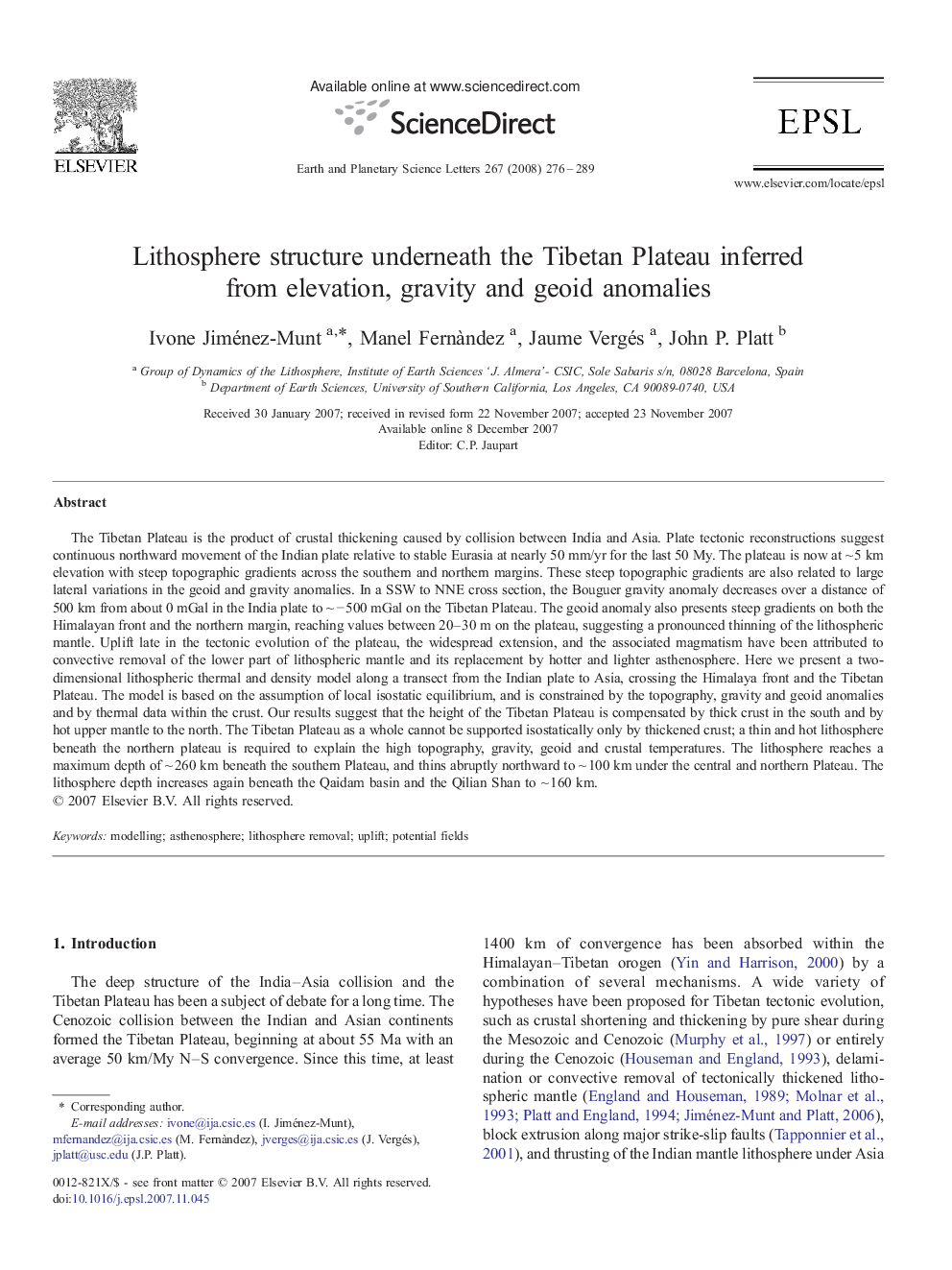| کد مقاله | کد نشریه | سال انتشار | مقاله انگلیسی | نسخه تمام متن |
|---|---|---|---|---|
| 4679901 | 1634901 | 2008 | 14 صفحه PDF | دانلود رایگان |

The Tibetan Plateau is the product of crustal thickening caused by collision between India and Asia. Plate tectonic reconstructions suggest continuous northward movement of the Indian plate relative to stable Eurasia at nearly 50 mm/yr for the last 50 My. The plateau is now at ~ 5 km elevation with steep topographic gradients across the southern and northern margins. These steep topographic gradients are also related to large lateral variations in the geoid and gravity anomalies. In a SSW to NNE cross section, the Bouguer gravity anomaly decreases over a distance of 500 km from about 0 mGal in the India plate to ~ − 500 mGal on the Tibetan Plateau. The geoid anomaly also presents steep gradients on both the Himalayan front and the northern margin, reaching values between 20–30 m on the plateau, suggesting a pronounced thinning of the lithospheric mantle. Uplift late in the tectonic evolution of the plateau, the widespread extension, and the associated magmatism have been attributed to convective removal of the lower part of lithospheric mantle and its replacement by hotter and lighter asthenosphere. Here we present a two-dimensional lithospheric thermal and density model along a transect from the Indian plate to Asia, crossing the Himalaya front and the Tibetan Plateau. The model is based on the assumption of local isostatic equilibrium, and is constrained by the topography, gravity and geoid anomalies and by thermal data within the crust. Our results suggest that the height of the Tibetan Plateau is compensated by thick crust in the south and by hot upper mantle to the north. The Tibetan Plateau as a whole cannot be supported isostatically only by thickened crust; a thin and hot lithosphere beneath the northern plateau is required to explain the high topography, gravity, geoid and crustal temperatures. The lithosphere reaches a maximum depth of ~ 260 km beneath the southern Plateau, and thins abruptly northward to ~ 100 km under the central and northern Plateau. The lithosphere depth increases again beneath the Qaidam basin and the Qilian Shan to ~ 160 km.
Journal: Earth and Planetary Science Letters - Volume 267, Issues 1–2, 1 March 2008, Pages 276–289